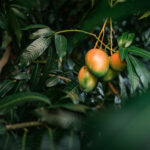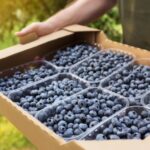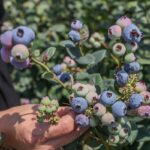Agronometrics in Charts: Peruvian avocado industry navigating a complex landscape with resilience

In this installment of the ‘Agronometrics In Charts’ series, Sarah Ilyas studies the state of the Peruvian Avocado Industry. Each week the series looks at a different horticultural commodity, focusing on a specific origin or topic visualizing the market factors that are driving change.
Peruvian avocado shipments to the global market soared to an impressive US$950 million during the 2023 campaign (March-October), showcasing a commendable growth of +4.4% in comparison to the previous year, as reported by the Exporters Association (ADEX).
Despite this positive trend, the industry faced multiple challenges, including the impact of the El Niño Phenomenon, Cyclone Yaku, social protests, and issues related to inadequate irrigation infrastructure, according to Claudia Solano Oré, the Agroexports Manager at ADEX.
According to data from the ADEX Data Trade Commercial Intelligence System, the Netherlands emerged as the leading importer, making purchases worth US$282M representing 30% of the total and experiencing a remarkable increase of +109%. Spain secured the second position with US$187M, contributing 20% to the total, followed by the United States (14%), Chile (10%), and the United Kingdom.
 Source: USDA Market News via Agronometrics.
Source: USDA Market News via Agronometrics.
(Agronometrics users can view this chart with live updates here)
Despite its success in the 2023 campaign, the avocado cultivation sector in Peru faced several obstacles, particularly in northern Peru, where expectations of high yields and large sizes were met with challenges posed by high temperatures. This resulted in physiological processes of the fruit being strongly impacted, causing dry matter content stagnation, lot heterogeneity, and increased fruit drop. Post-harvest processes were also affected, with reduced shelf life and heightened susceptibility to anthracnose, leading to increased scrutiny during inspection and segregation of fruits in destination warehouses.
Currently, most forecasts from specialists indicate that the El Niño phenomenon would affect the first quarter of this year. “In northern Peru, for avocado, this corresponds to a critical stage where plant stress can lead to physiological disorders affecting the quality and condition of the fruit, similar to the previous season. Therefore, strategies with a comprehensive and preventive approach must be implemented to mitigate the effects of plant abiotic stress, maximizing root development and maintaining an active leaf surface. The knowledge field technician teams gained from the previous season, for example using biostimulants should lead to significantly diminished effects,” advises Lizzeth Miranda, a Peruvian Agroindustrial Engineer .
Peru has set an ambitious target to export 25% of its avocado production to the United States by 2025. "The PAC's original goal is to export 200-220 million pounds of avocado to the US in 2024. Thus, when we talk about exporting 25% of our avocado production in 2025 it means we should export some 300 to 350 million pounds. It won't be easy, but last year we had a good campaign," says the president of the Peruvian Avocado Commission (PAC), José Antonio Castro Echecopar.
The industry is keenly aware of the formidable competition posed by Mexico and California and is actively implementing key improvements. These enhancements involve increasing the dry matter percentage of the fruit and implementing effective post-harvest management practices.
Exporters stress the importance of strategic collaboration with importers possessing expertise in proper fruit conditioning, preheating, ripening, and distribution, all aimed at ensuring the consistent delivery of high-quality avocados to consumers. In the face of these challenges, the industry remains resilient, demonstrating its adaptability and determination to secure a prominent position in the fiercely competitive global market.

Source: USDA Market News via Agronometrics.
(Agronometrics users can view this chart with live updates here)
In our ‘In Charts’ series, we work to tell some of the stories that are moving the industry. Feel free to take a look at the other articles by clicking here.
All pricing for domestic US produce represents the spot market at Shipping Point (i.e. packing house/climate controlled warehouse, etc.). For imported fruit, the pricing data represents the spot market at Port of Entry.
You can keep track of the markets daily through Agronometrics, a data visualization tool built to help the industry make sense of the huge amounts of data that professionals need to access to make informed decisions. If you found the information and the charts from this article useful, feel free to visit us at www.agronometrics.com where you can easily access these same graphs, or explore the other 21 commodities we currently track.














































